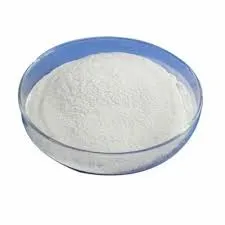
nov . 26, 2024 05:38 Back to list
Density Analysis of HPMC Polymer Solutions in Various Formulations and Conditions
Understanding HPMC Density Implications and Applications
Hydroxypropyl methylcellulose (HPMC) is a versatile cellulose ether that is widely used in various industries, including pharmaceuticals, food, construction, and cosmetics. One of the critical parameters that influence the functionality and application of HPMC is its density. Understanding HPMC density is essential for manufacturers, formulators, and researchers, as it affects the material's behavior in different applications.
What is HPMC Density?
Density, defined as mass per unit volume, is a fundamental property of any material. In the context of HPMC, density can vary based on several factors, including the degree of polymerization, the ratio of hydroxypropyl to methyl groups, and the method of preparation. Generally, the density of HPMC is around 1.2 to 1.3 g/cm³, but variations can occur depending on the specific formulation and intended use.
Factors Influencing HPMC Density
1. Molecular Weight The molecular weight of HPMC is a crucial determinant of its density. Higher molecular weight HPMCs tend to have a lower density due to the increased presence of larger macromolecules, which occupy more volume.
2. Composition The ratio of hydroxypropyl to methyl groups in HPMC affects its hydrophilicity and interactions with water. This can, in turn, influence the density and the overall behavior of the polymer in different environments.
3. Formulation Conditions The method of synthesis, drying processes, and the presence of additives can create variations in HPMC density. For instance, the crystallization process during drying can lead to denser forms of HPMC compared to amorphous counterparts.
hpmc density

Applications Impacted by HPMC Density
1. Pharmaceuticals In the pharmaceutical industry, HPMC is often used as a binder, thickener, or film-forming agent in tablets and capsules. The density of HPMC impacts the flow properties of powders and affects the dissolution rate of drugs, which is crucial for the efficacy of medications.
2. Food Industry HPMC is valued in food formulations for its ability to improve texture and stability. In low-fat and gluten-free products, HPMC density can affect the viscosity and mouthfeel of food. Understanding HPMC density allows food scientists to create better formulations with desired textural properties.
3. Construction In construction, HPMC is commonly used in tile adhesives and drywall compounds. The density of HPMC affects the workability and performance of these materials, influencing adhesion, water retention, and drying times. Higher density formulations may provide better structural integrity and performance in various building applications.
4. Cosmetics In the cosmetics industry, HPMC is used as a thickener and stabilizing agent in lotions, creams, and gels. The density of HPMC can influence the final viscosity of products, impacting consumer perception and usability. Formulators must carefully consider density to achieve the desired sensory properties.
Conclusion
HPMC density is a crucial parameter that affects its functionality and applicability across various industries. By understanding the factors that influence density and its implications for product performance, manufacturers and formulators can optimize their formulations for specific applications. As the demand for innovative products continues to grow, the role of HPMC and the importance of its density will remain significant in ensuring product quality and efficacy. As research advances, the exploration of HPMC density will undoubtedly lead to new applications and enhanced performance in existing ones. Understanding this characteristic is essential for anyone involved in the formulation or application of HPMC.
-
The Widespread Application of Redispersible Powder in Construction and Building Materials
NewsMay.16,2025
-
The Widespread Application of Hpmc in the Detergent Industry
NewsMay.16,2025
-
The Main Applications of Hydroxyethyl Cellulose in Paints and Coatings
NewsMay.16,2025
-
Mortar Bonding Agent: the Key to Enhancing the Adhesion Between New and Old Mortar Layers and Between Mortar and Different Substrates
NewsMay.16,2025
-
HPMC: Application as a thickener and excipient
NewsMay.16,2025
-
Hec Cellulose Cellulose: Multi functional dispersants and high-efficiency thickeners
NewsMay.16,2025







